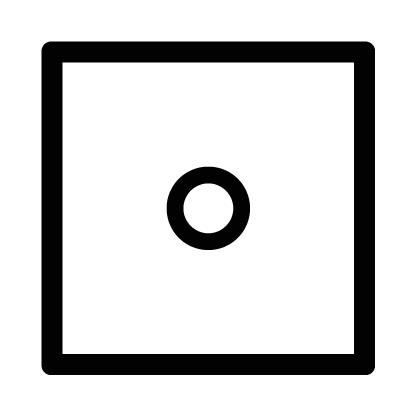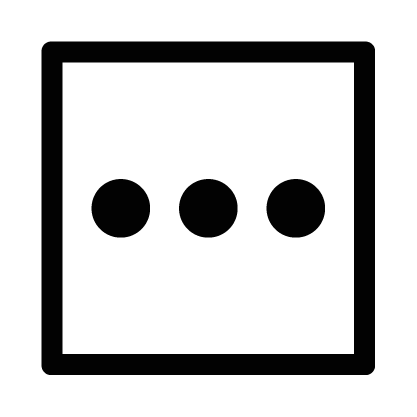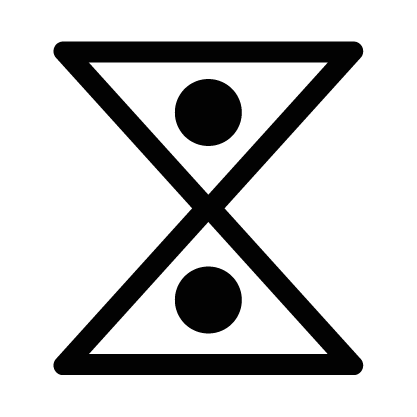D5: Goal Dynamics
Part of the Agilism Framework (Dimension 5 of 5).
Each Dimension in the Agilism Framework explores a different pathway through change.
This final one—Goal Dynamics—is about rethinking how you move toward what matters when the world changes faster than your ability to keep up.
It challenges the old logic of setting big scary, audacious goals, where you chose a distant summit and spent years climbing it (e.g. "where do you see yourself in five years?").
In its place, it offers a new rhythm built for nonlinear times. In a world that no longer holds still, "progress" isn't about rigid milestones or heroic endurance. It's about listening, learning, adjusting, and acting in shorter cycles – where every step gives quick feedback, and every turn sharpens your sense of direction.
A warning! Many people want to start with this Dimension, because they believe it promises motion, productivity, systems, efficiency, and ultimately achievement.
But Goal Dynamics only works when it stands on the foundation built by the earlier Dimensions.
It's the synthesis where adaptability becomes direction and momentum – where all the inner work of Agilism finally moves out into the world.
What follows is an introduction to the core ideas behind Goal Dynamics, followed by the four Principles that give it shape—practical lenses for strategic quitting, pathfinding, experimentation, and balanced productivity.
Together, they help you stay in motion without burning out, align ambition with reality, and keep evolving your goals as fast as the world revolves around them.
The bar above indicates your current position in the framework, and the arrows on the right allow you to move between Dimensions.
Your goals are living systems, not finish lines
The real skill isn't just in setting goals once, but adjusting them as life and time move faster than your plans. Goal Dynamics is the practice of building progress that breathes with change–experimenting, iterating, and refining your direction without losing momentum.
In the pursuit of your goals, you can't get back time, but you can shape how you spend it.
Discover how this Dimension transforms motion into mastery in a rapidly changing world.
Why the Old Success Playbook Is Obsolete
For most of modern history, life moved in straight lines. You could set a long-term goal, create a plan, and climb steadily upward—because the ladder itself remained fixed.
Industries were relatively stable. Skills lasted decades. Careers unfolded in predictable chapters. Those who stuck to their plans were rewarded for their discipline.
Traditional goal-setting thrived in that world. You picked a destination, mapped the route, and stuck to the plan. Progress was measured by how faithfully you executed the plan—not by your capacity to adapt when circumstances shifted. Execution was a badge of honor.
But the world that rewarded such certainty has vanished.
Today, the sheer pace of change outstrips the shelf life of even the best-laid plans. Technology evolves faster than skill sets can adapt. Markets and careers flip in a season. Entire industries emerge and dissolve within just a few years. What was once a clear, linear climb now resembles a constantly shifting maze.
Today, the sheer pace of change outstrips the shelf life of the best-laid plans.
And yet, many of us cling to the same outdated playbook:
Set a goal.
Commit relentlessly. Show grit and perseverance.
Reach it no matter what.
The problem isn't commitment—it's rigidity.
Fixed goals assume a fixed world. When reality changes faster than your plan, persistence becomes paralysis. You double down on yesterday's map while the landscape rewrites itself around you.
Traditional goal-setting doesn't just lag behind reality—it imprisons you within it. By the time you reach the summit you envisioned years ago, the mountain itself may have moved – or your own motivations may have shifted.
True progress in our nonlinear world demands a new rhythm—one that treats goals not as destinations, but as evolving systems.
Why This Matters Now
The era of rigid five-year plans is behind us. We’re no longer in a world where goals follow a predictable, straight-line path from idea to completion.
Today, life feels more like a winding road, filled with sharp turns, dead ends, and detours that demand constant adaptation.
Yet, the way we approach goal-setting remains stuck in the past.
We continue to treat goals like towering peaks to conquer, focusing on big milestones while ignoring the shifting terrain beneath us. But what happens when the landscape keeps changing? The question isn’t just, “What’s the goal?” but, “How do you stay in motion when the goalposts won’t stay put?”
That’s where Goal Dynamics steps in. This innovative approach blends flexibility with focus, encouraging you to prioritize actions over outcomes and motion over rigidity. Think of it as a shift:
- From rigid plans to adaptive strategies.
- From “achieve or fail” to “experiment, iterate, gain momentum.”
- From a finish-line fixation to mastering sustainable progress.
Why does this matter so much now? Because today’s big, lofty goals often backfire. What starts as exciting and aspirational can quickly become overwhelming or irrelevant when life inevitably takes a different course.
We’re also prone to pursuing outdated ambitions, ones that may no longer resonate but sit unchallenged out of sheer inertia. At the same time, modern life consumes our mental bandwidth.
With information overload, fractured attention, and increasing demands, sustained focus has become a scarce resource.
Meanwhile, the pace of change is accelerating. We’re living longer, adapting faster, and reinventing ourselves more frequently than any generation before.
Goal Dynamics offers a smarter path forward. It’s not about doing less—it’s about doing smarter. It’s about learning to stay agile without losing purpose, building systems that allow you to move with life instead of getting stuck fighting against it.
Goal Dynamics: The 4 Core Principles of Achieving Progress Without Squandering Time
When change outpaces our plans, progress has to shift too – so we don't waste time chasing goals that no longer align with the world or the person we're becoming.
These four principles anchor the practice of Goal Dynamics—a discipline rooted in staying in motion with purpose, adjusting as circumstances evolve, and using feedback to recalibrate before momentum stalls or time runs out.
At the center of this dimension is a simple axiom: time is finite.
Each principle enhances your ability to strike a balance between ambition and awareness — to keep moving forward without burning out, and to let your goals evolve as you do.
Together, they create a rhythm of progress that honors time as your most limited resource—helping you achieve more of what matters, without sacrificing what can never be replaced.
5. Goal Dynamics
Set goals that bend and breathe – and still get you there
What Goal Dynamics Is Not
Before we define what Goal Dynamics is, let's clarify what it is not:
❌ It’s not about abandoning your ambitions.
❌ It’s not a pass for aimlessness or apathy.
❌ It’s not anti-discipline or anti-effort.
❌ It’s not code for “start small and stay small.”
❌ And it’s certainly not a rejection of structure or vision.
Goal Dynamics is smarter ambition, not smaller ambition.
It’s about staying committed without getting stuck, focused without becoming rigid, and driven without burning yourself out.
This isn’t the death of goal-setting.
It’s goal-setting reimagined for a nonlinear world.
When life no longer moves in straight lines, why should your goals?
Principles like adaptive goal strategies and antifragile productivity shine a new light on ambition, helping you adjust to change without losing momentum.
This is dynamic goal planning for the modern reality.
It’s not about doing less.
It’s about doing what matters, better.
What Goal Dynamics Is
Goal Dynamics is a rhythm for navigating ambition without burning out.
It’s not about rigid plans or ticking endless to-do lists.
It’s about creating an adaptive system that works with your life as it changes.
✅ Set clear intentions that stay adaptable.
✅ Break big goals into small, actionable steps.
✅ Pivot quickly when the unexpected happens.
✅ Build rest and reflection into your process.
✅ Sustain energy and momentum over the long haul.
This isn’t about crossing goals off a list. It’s about crafting a system that evolves alongside you.
Launching a new project? Rethinking your career? Recovering from burnout? Realigning your priorities?
Goal Dynamics equips you with the tools to keep moving forward—even when the path ahead feels uncertain.
👉 Want a refresher? Jump back to the 4 Principles →
Why Goal Dynamics Matter More Now
The World is Nonlinear—Your Goals Should Be Too
Life rarely moves in a predictable straight line anymore. Nonlinear goal setting emphasizes the importance of flexibility and adaptability as the foundation for achieving meaningful progress.
Rigid Plans Shatter Under Pressure
Traditional, static goal-setting crumbles in a fast-changing world. Agile goal setting means building systems that bend without breaking, keeping you in forward motion regardless of volatility.
Burnout Isn’t a Personal Failing; It’s a System Problem
Discipline isn’t the issue for most people. Flawed systems are. Antifragile productivity focuses on creating sustainable progress systems that conserve energy and focus while preventing burnout.
You Don’t Need Certainty to Take Action
If you're waiting for perfect conditions, that’s a trap. Dynamic goal planning prioritizes small, immediate actions over clarity, proving that movement itself generates momentum.
Quitting Can Be Strategic
Clinging to outdated ambitions is no longer a strength.
Don't fall for the myth of grit, perseverance, and pushing through - at any cost.
That's inertia!
Knowing when to pivot or walk away is one of the most advanced moves you can make in flexible goal systems.
We’re Living Longer; Pacing Is Everything
With decades of reinventions and career shifts ahead, sustained, measured progress beats the quick sprint every time. Why rush when you can thrive for the long haul?
Big Goals Can Backfire in a Fast World
The problem with massive, static goals? They often become irrelevant or feel overwhelming. Atomic goal setting lets you shrink or redefine commitments without losing momentum.
Your Attention Is Your Most Valuable Asset
With endless distractions competing for your focus, fragmented efforts dilute results. Adaptive goal strategies align your limited energy with your most critical actions.
Outdated Goals Stick Without Realignment
If you never stop to reassess your goals, you risk chasing things you no longer care about. Regular alignment ensures your energy is spent on what still matters, not what used to.
Reinvention Isn’t Rare; These Days, It’s a Common Reality
Whether it’s a career pivot, a shift in values, or rediscovering passions, transformation has become the new norm. Dynamic goal planning gives you the structure to evolve with confidence and clarity.
👉 Want a refresher? Jump back to the 4 Principles →
Final Thoughts - It's About Protecting Your Time
Goal dynamics is your internal guide for creating deliberate movement, even when the way forward is uncertain.
It’s not about forcing growth or holding onto outdated ambitions. It’s about learning how to adapt with clarity and confidence.
Instead of rigidly aiming for fixed finish lines, you move in rhythms that match the pace of the world around you, responding to what works, what doesn't, and how your motivations evolve - while protecting your time.
This is nonlinear goal setting at its core. It’s a lot less about hustling harder and more about making smart, timely choices – knowing when to push, when to pause, and when to pivot, not from confusion but from awareness.
Rather than chasing every result at any cost, dynamic goal planning helps you design a system that maintains your energy, curiosity, and focus over time. Agile goal setting allows for experimentation, upward adjustments, and sustainable progress.
Because if the world evolves every day, shouldn’t your goals evolve too.
Goal dynamics isn’t a step down in ambition. It’s a recalibration. A smarter, more flexible way of turning time and motion into meaning.
You're not here to sprint rigidly toward a deadline.
You’re here to move with intelligence, adaptability, and rhythm, making every step count in a world that's constantly in flux.
👉 Want a refresher? Jump back to the 4 Principles →
Frequently Asked Questions
Still curious? Here are some of the most common questions we've received from our readers about Goal Dynamics, along with the unique aspects that distinguish this approach.
Tap a question below to explore more.
▶ Isn’t this just another productivity system?
A: Not exactly. Most productivity systems are built for linear paths, assuming perfect conditions. Goal Dynamics is designed for real life, where pivots, pauses, and unexpected challenges are baked into the process. Think of it as an agile approach to progress, tailor-made for a world that rarely moves
▶ What if I don’t know what my big goal is yet?
A: That’s totally okay. Start small—with a micro-goal. Think of action as discovery. Clarity doesn’t just happen by thinking harder; it’s a byproduct of movement. Each step, no matter how small, illuminates the path ahead, even if you can’t yet see the entire horizon.
▶ How do I stop abandoning goals midway?
A: Break them down into atomic, manageable actions. Build in regular reflection points to assess progress and pivot if needed. Abandoning steps isn’t failure; it’s feedback. By designing goals as dynamic processes, you give yourself permission to adjust course without losing momentum or motivation.
▶ Doesn’t this reward procrastination?
A: Not at all. Goal Dynamics isn’t about endless planning or avoiding action; it’s about dismantling the fear of imperfection. Instead of waiting for the perfect starting point, focus on small, consistent progress. Progress doesn’t require perfect leaps; it rewards imperfect, steady steps over time.
▶ What if I love big, bold goals?
A: Bold goals are fantastic! Just make sure they’re built on adaptable foundations. Envision the big swings you want to take but stay nimble enough to adjust. Agile goal setting means thinking big but recognizing that flexibility and experimentation make ambition sustainable.
▶ How does this tie into emotional resilience?
A: It reduces burnout by weaving recovery, adaptability, and experimentation into the framework. By viewing progress through the lens of energy management, not brute force, you sustain forward momentum without depleting yourself. Progress becomes a dynamic cycle, not a sprint to collapse.
▶ What if I need to quit something but feel guilty?
A: Quitting isn’t a failure; it’s a recalibration. Imagine a summit halfway through a climb. From there, you might choose a new peak, a different path, or even a pause. Adaptability is about adjusting your focus based on new insights—not clinging to an old plan out of obligation.
👉 Want a refresher? Jump back to the 4 Principles →
Next Steps:
If this Dimension resonated with you, here’s how to continue your journey through the Agilism Framework.
- Get the “21 Principles” PDF →
Subscribe to our newsletter to get your copy and stay updated with fresh insights as the framework evolves. - Return to the Full Agilism Overview →
A primer on what it is, where it came from, and why it matters. - Explore the Dimensions →Lifestyle Design, Navigating Uncertainty, Reframing Your Thinking, Emotional Flexibility, Goal Dynamics.
Not sure where to begin? Start with the dimension that feels more relevant to your current challenge–or opportunity.

Previous

Next
Explore the Other Agilism Dimensions
Browse other Dimensions to expand your Agilism journey










